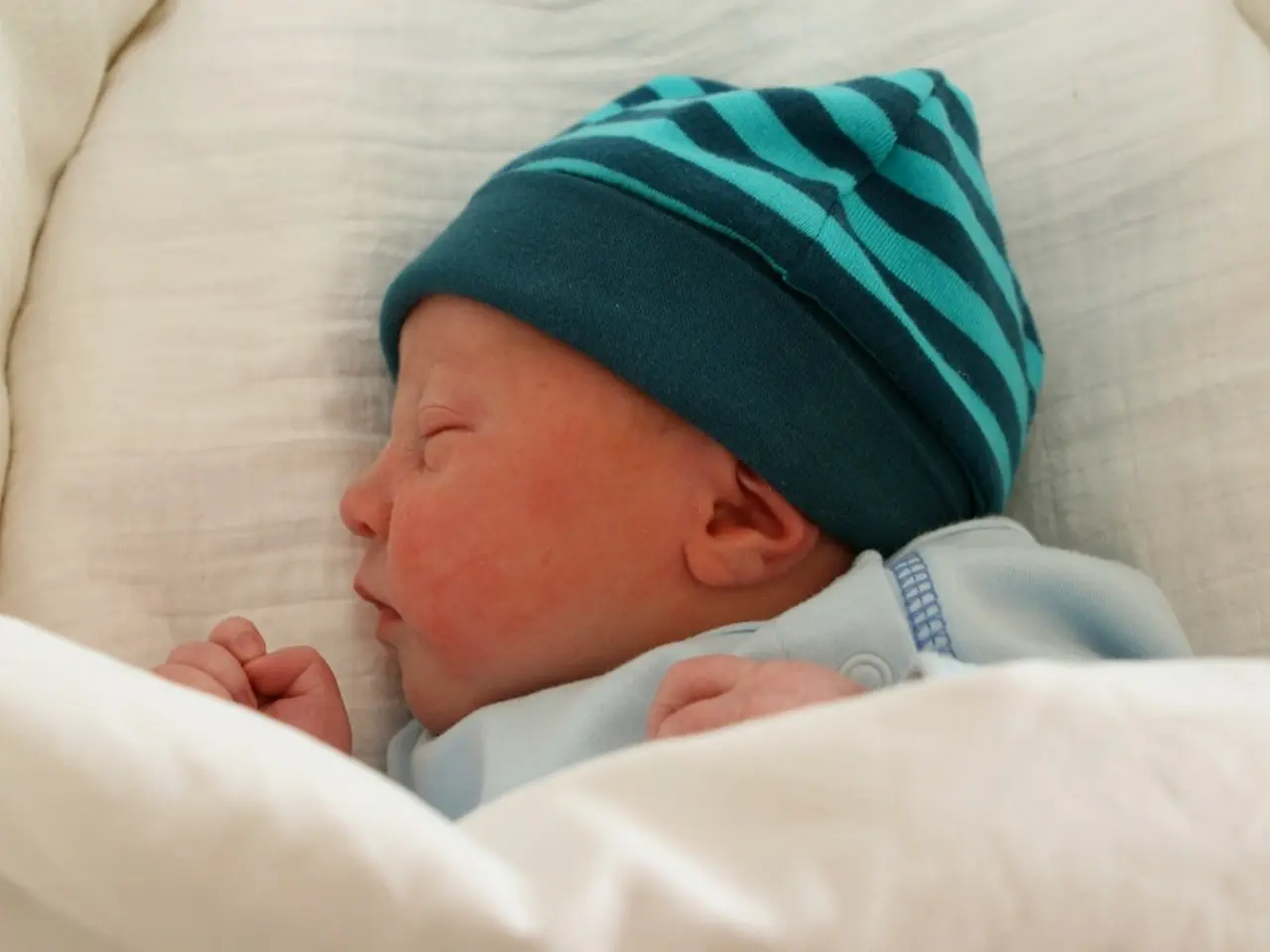Infant Sleep Routine: Examples, Advice, and Further Insights
Caring for a 3-Month-Old Baby's Sleep: A Comprehensive Guide
A 3-month-old baby's sleep is a crucial aspect of their overall development. Here are some tips to help ensure your little one gets the rest they need.
Creating the Perfect Sleeping Environment
The sleeping environment for a 3-month-old baby should be free of distractions, dimly lit, quiet, cool, and comfortable. A baby's sleeping space should be designed to promote a calm and peaceful atmosphere.
Variations in Sleep Schedules
At this age, a baby's sleep schedule can vary greatly. Some may nap for longer periods, while others may nap for shorter durations. It's essential to be patient and adapt to your baby's unique needs.
Establishing a Consistent Routine
Consistency in bedtime routine is key. This helps babies recognise it's time for sleep. A sample sleep schedule for a 3-month-old baby with longer naps includes waking up at 7:30 a.m., napping at 9 a.m., 11:30 a.m., 2 p.m., 5 p.m., and going to bed at 7:30 p.m. Another sample schedule for shorter naps might look like this: waking up at 7 a.m., napping at 8 a.m., 10:15 a.m., 12:30 p.m., 2 p.m., 5 p.m., and going to bed at 7:30 p.m.
Feeding and Sleep
Feeding schedules can impact whether a child might wake up overnight. While feeding on demand is preferable for a 3-month-old baby, consider adjusting feeding times to give you a more solid block of sleep.
Sleep Regression and Life Changes
Sleep regression can occur during key moments in a baby's development, such as at 4, 8, 10, and 12 months. Life changes, such as a move or a parent returning to work, can also temporarily affect a baby's sleep.
Sleep Training
Most medical experts recommend waiting until a baby is 4 or 5 months old before beginning sleep training. This allows the baby's sleep patterns to stabilise.
Safety First
Always ensure your baby is placed in a safe sleeping space, on their back. Creating a consistent routine for waking and putting a baby to bed can help adjust the baby's internal clock to a schedule as they get older.
Understanding a Baby's Sleep Cycles
A 3-month-old infant's sleep can be broken into short periods of wakefulness and sleep throughout the day and night. Brief periods of fussing or squirming during the night are normal as the baby transitions between sleep cycles.
Promoting Independent Sleep
Putting a baby to bed when they're drowsy rather than completely asleep can help them learn to fall asleep on their own. This is an essential skill for promoting healthy sleep habits in the future.
Distinguishing Day from Night
A sample sleep plan for a 3-month-old infant focusing on longer night sleep phases includes establishing a regular daytime schedule with fixed feeding and sleeping times, implementing calming evening rituals between 18 and 20 hours to signal the end of the day, and helping the baby distinguish day from night, as they do not naturally recognise the difference yet.
Every baby reaches sleep milestones at their own pace, so some babies might still wake every few hours through the night at 3 months. However, with patience, consistency, and a bit of trial and error, you can help your little one develop healthy sleep habits that will benefit them for years to come.
Read also:
- Abu Dhabi initiative for comprehensive genetic screening, aiming to diagnose over 800 conditions and enhance the health of future generations in the UAE.
- Elderly shingles: Recognizing symptoms, potential problems, and available treatments
- Protecting Your Auditory Health: 6 Strategies to Minimize Noise Damage
- Exploring the Reasons, Purposes, and Enigmas of Hiccups: Delving into Their Origins, Roles, and Unsolved Aspects





